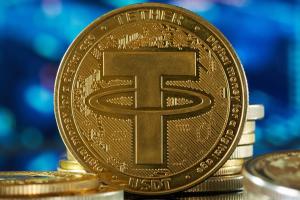 11, Nov
11, Nov
DeFi Applications of Tether
1. Enabling Stable Trading Pairs
Most decentralized exchanges (DEXs) like Uniswap primarily offer trading between volatile crypto assets like ETH and BTC. Tether provides a USD proxy to create stable trading pairs like ETH/USDT. This allows traders to move in and out of positions without returning to fiat and provides an easy calculation for profit/loss.
Stable pairs also allow the creation of synthetic assets pegged to USD rather than crypto collateral. This brings a critical “stablecoin performance” to the decentralised finance ecosystem.
2. Facilitating DeFi Payments and Transactions
The volatility of assets like ETH makes them unsuitable for routine payments. Prices can quickly shift 10-20% day-to-day. Tether provides a stable medium of exchange for decentralized apps, akin to how fiat works in traditional finance.
Use cases include:
- Lending platforms require stable collateral and interest repayment.
- Decentralized prediction markets rely on USDT for betting and payouts.
- NFT platforms use USDT for purchase, bidding, and pricing.
- Cross-chain bridges utilise USDT to transfer value across chains.
Without stablecoins like Tether, these transactional use cases would be severely limited.
3. Providing Collateral for Lending
Decentralized lending markets allow users to supply assets as collateral to take out loans of other assets.
MakerDAO pioneered this with a lending platform that uses ETH as collateral to generate DAI stablecoins. However, volatility in the collateral creates risks—falls in the ETH price can trigger the liquidation of the loan.
Tether offers a more stable form of collateral for borrowing. Borrowers can pledge USDT to take out loans in other crypto assets while avoiding liquidation risk. Lenders similarly benefit from the stability of Tether when earning interest on supplied assets.
4. Bridging Crypto and Fiat
Tether is a critical bridge between the crypto economy and traditional fiat finance. Many crypto firms hold significant USDT reserves to manage fiat liquidity needs. Traders use USDT to earn yield in DeFi while maintaining exposure to the dollar.
For most users, moving between bank accounts and crypto still relies on centralized exchanges. Tether offers an intermediate step—once fiat is converted to USDT, it can be moved and traded across the decentralized finance ecosystem.




